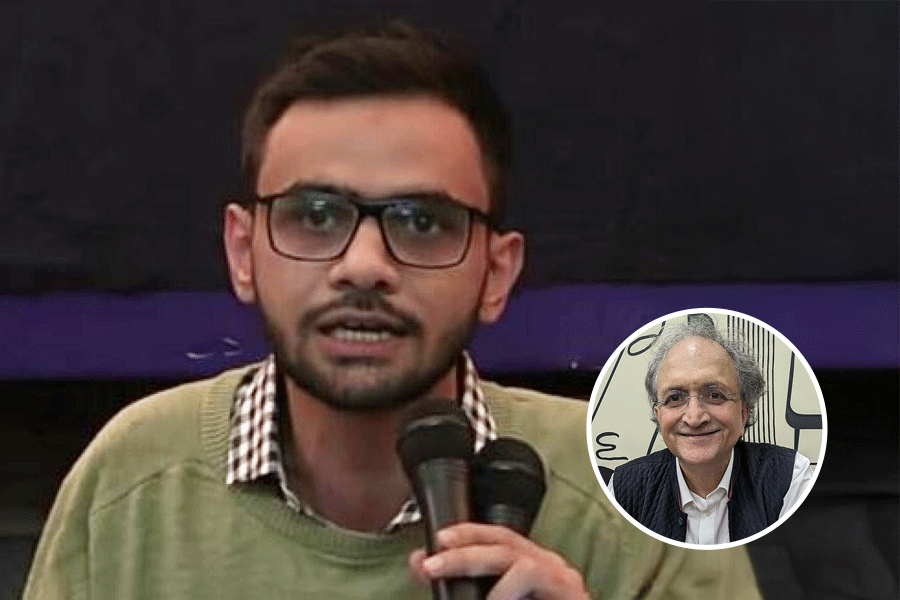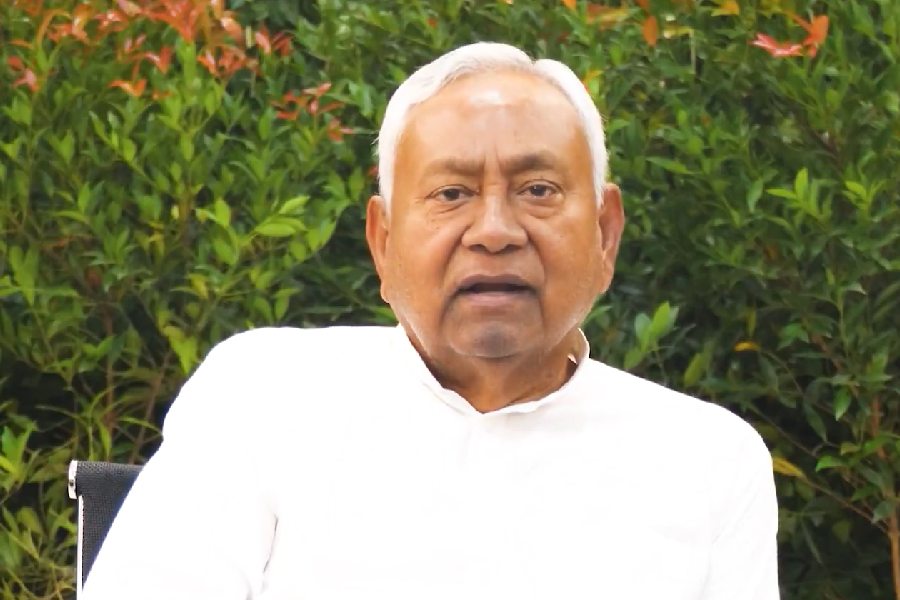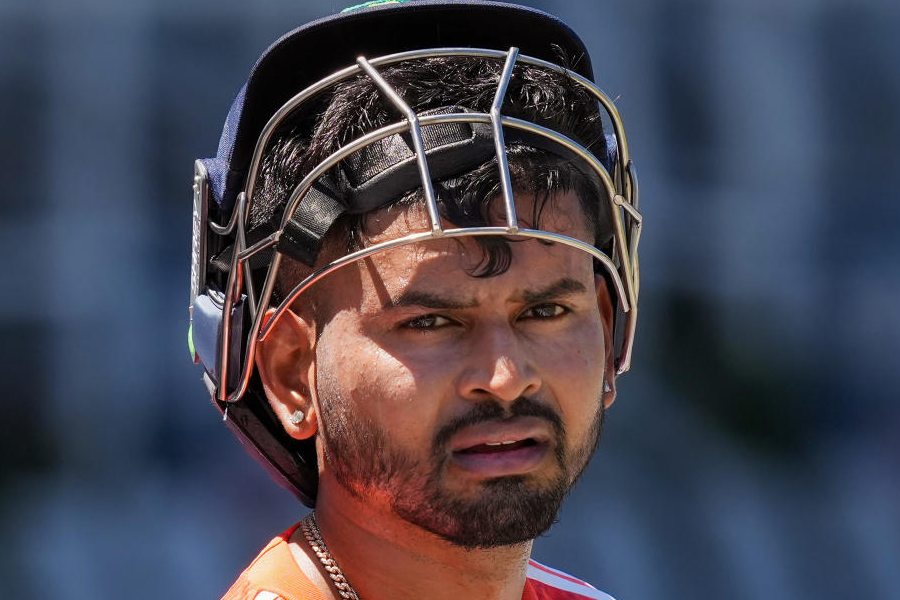 |
| Director’s cut: Palekar, 60, says he’s an artist by education, an actor by accident and a filmmaker by choice |
Amol Palekar couldn’t care less that the news of his film Paheli being nominated by the Indian government for the Oscars didn’t go well with some film folk and that the dozens of bouquets, stalked in a corner of his living room now, had to come with a few brickbats.
It’s evident that the news has come as a bit of a surprise to him. Wife Sandhya, however, says she had an intuitive feeling. Then, of course, accolades from film industrywallahs like Javed Akhtar must have more than made up for the average sailing at the box office.
Nevertheless, it is time to celebrate, answer the 20th phone call of the day ? and plan for the Great Oscar Pitch. After Lagaan, Devdas and Shwaas, all eyes will be on Paheli. And there’s good reason why. There are some in the industry who are miffed that a box-office non-performer is the government’s choice for the Oscars. But there are others who see the film ? set in Rajasthan, the most popular holidaying destination in India for international tourists ? as just right for a gala global platform. Moreover, the film is steeped in family values and tradition. “It’s a film that’s truly representative of India and something that can catch the fancy of an international audience,” says a critic.
Yet, Palekar, 60, seems unperturbed by the cloud of expectation hanging above his head now. “I’m leaving it to the producer (Shah Rukh Khan),” he shrugs, sitting in his drawing room in a snug little flat ? aptly called Cosy Nook ? nestling in a street off Pune’s elite Bhandarkar Road.
The reaction tallies with his reputation in film and theatre circles. Says Jyotsna Karyekar, television actor and veteran theatre personality who has known Palekar since his early days in theatre, “I’ve never known him to get flustered. Nothing changes his momentum.”
So we discover, as he refuses to strike a pose for photographs. And no amount of coaxing or cajoling seems to make him change into something other than the shorts and T-shirt he’s been lounging in. “With Amol, what you see is what you get. He can’t put on a show because he’s expected to,” comments Sandhya, a script and screen-play writer. The gentle-mannered, soft-spoken Palekar hence has a lot of fond friends.
The soft-spokenness is, perhaps, deceptive. Contemporaries speak of Palekar as a quiet person but with a firm resolve and determination. Actors he’s directed say that he almost never raises his voice on the sets. But he also never changes a shot just because the actor can’t do it. “He’ll give you the time you need to get it right but will not change the shot. He’s clear about what he wants and will achieve it,” says Marathi and Hindi theatre actor, Yatin Karyekar.
That steady resolution, say contemporaries, also must have helped him transcend mediums and roles. “I am an artist by education, an actor by accident and a film maker by choice,” he states. Palekar, a J.J. School of Arts graduate, started his working life as a clerk in the State Bank of India in the 1960s. Over the years that followed, he managed to switch mediums ? from the easel to the stage to the screen.
Theatre, as he puts it, happened by pure chance. While he had nothing to do with the stage, girlfriend Chitra ? whom he later married ? was part of director Satyadev Dubey’s theatre group. Palekar’s tryst with theatre began when he started escorting Chitra to her rehearsals. Dubey noticed that the slightly-built, shy boy seemed to have a lot of time on his hands. And one day, he offered the boy a role in his play. Palekar didn’t have a reason to refuse.
Since then, Palekar has plunged into some serious theatre. Whether it was experimental theatre with Dubey’s troupe or the Chabildas theatre movement started by Marathi actors, Palekar was a sponge, absorbing it all. Recalls Sulabha Deshpande, a veteran theatre and cinema actor, “He was a keen learner”. Gradually he also started directing plays.
And then, cinema happened. Palekar made his Hindi film debut with Basu Chatterjee’s Rajnigandha in 1974. Most of the films he acted in were middle-class comedies. The protagonist he played was almost always an endearing character ? a simple, honest, gullible and unassuming hero that the common man could relate to. It so happened that the boy next door stood out in a crowd of macho heroes such as Garam Dharam and Angry Amitabh. Little wonder that his first three movies Rajnigandha, Chhoti Si Baat and Golmaal that were released almost simultaneously did well at the box office. And Palekar became an overnight success.
But then, there were new dreams to chase too. The artist was discovering a new medium. “I got fascinated by the idea of making a film. But I knew I wasn’t ready yet,” he reminisces. And the film sets on which he gave his shots became his learning ground. It helped that directors such as Hrishikesh Mukherjee, Basu Chatterjee and Shakti Samant were more than willing to feed his inquisitive mind. In 1980, he forayed into filmmaking with his directorial debut, a Marathi film called Aakriet. And Amol Palekar, the director, was born.
Acting continued on the side. It also gave Palekar a chance to learn from the masters. “I have been truly and extremely lucky,” he says, reclining on the squishy black leather sofa in his living room. And for a split second, the in-control expression gives way to a little emotion. Nostalgia sets in as he recalls how Hrishida gifted him a view-finder (which was in turn presented to Mukherjee by Bimal Roy), when Palekar shared his directorial dreams with him.
Ten films later, Palekar is happy at having followed his true calling. Filmmaking has given him creative freedom, which commercial success as an actor perhaps did not. And colleagues say they admire his transition. “After tasting a huge commercial success, he still chose to make films he wants,” notes actor Sachin Khedekar.
His first few films ? Aakriet (1981), Ankahee (1994), Bangarwadi (1995), Daayraa (1997) ? were low-budget projects that dealt with social issues. The stories were inspired by real life incidents.
“I admire his choice of subjects. They are original and he has always approached them with his own sensitivity,” says filmmaker Govind Nihalani. Thanks to the issues he chose to portray, Palekar had gained the image of an “arty” director by the 1990s.
But then, change is also inevitable. Close acquaintances say that the director’s ambition has grown with the passage of time and that probably the professional evolution happened alongside a change in his personal life. In 2000, Palekar married Sandhya after his divorce from Chitra and shifted to Pune.
His last two films Anaahat (2003) and Paheli (2005) were made on a larger scale than any of his previous films ? with big stars, bigger budgets and more mass appeal. Says ex-wife Chitra, “In all the years that we struggled with low budget films, maybe he did nurse a latent dream. He’s finally realising it.”
The wider his audience got, the closer Palekar went to the artist in him. Observes filmmaker Shyam Benegal, “The artist in him is more evident in his recent films.” The canvas has changed to film, though. Palekar hasn’t held an exhibition of his paintings for the last four or five years.
Palekar’s choices for unwinding these days seem to be long drives and a game of cricket with the family. Also, if it’s family time at stake, Palekar is known to politely draw a line between his fans and himself. “But that happens only when we eat out,” laughs Sandhya. “That’s the only time I can’t tolerate disturbances,” says Palekar, now underlining a passion for food.
If you haven’t caught him at such wrong times, Palekar is Mr Approachable ? or Uncle Affable ? himself. “He’s one of the very few people who did not develop an attitude problem,” says Benegal.
So we think we are particularly unlucky to face such an abrupt end to our conversation. Shah Rukh Khan is on the phone, and Palekar bids a hasty retreat to his room upstairs. At least it wasn’t food, we console ourselves.











